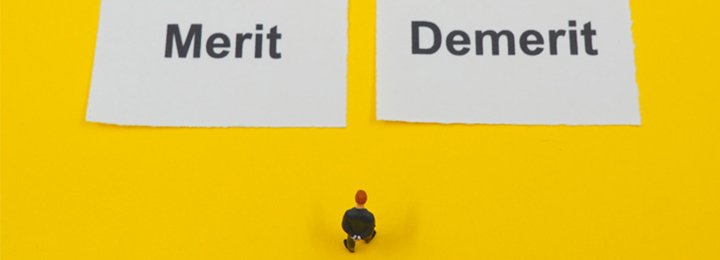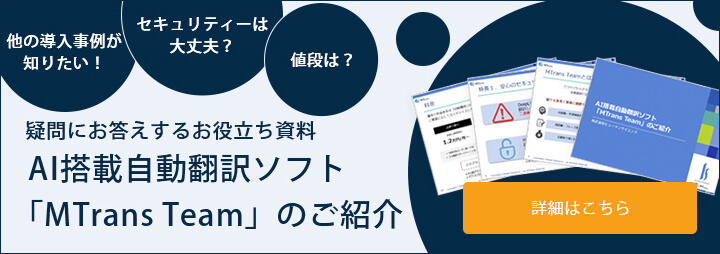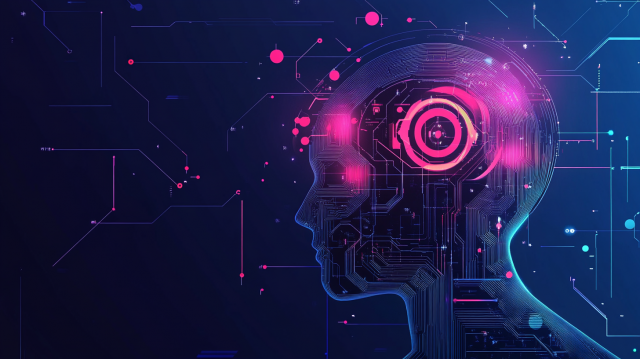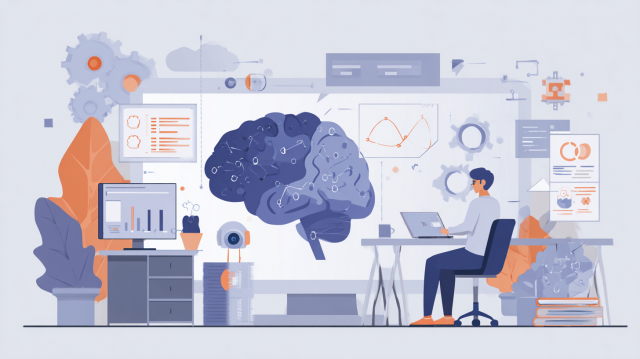
- Table of Contents
1. What is a Translation Support Tool (CAT Tool)?
In translation work, multiple individuals are involved, including project managers (coordinators), translators, and reviewers (checkers). Among these, translation support tools specifically assist the work of translators and reviewers, improving the efficiency of translation tasks and the quality of translated texts. They are also known as CAT tools (Computer-Assisted Translation tools). Notable products include Human Science's MTrans Team, Memsource's Memsource, and RWS's Trados Studio.
Related Articles
If you want to learn more about the features of Trados and Phrase TMS (formerly Memsource), please see this article.
What is Trados? How does it help with translation? Introducing its features and benefits
・Differences from Translation Management Systems
Translation management systems are designed to assist project managers. They provide features such as scheduling management for translation tasks, centralized management of work data, and process automation. Notable products include Human Science's MTrans Team, Phrase's Phrase TMS (formerly Memsource), and RWS's Trados GroupShare (Phrase TMS, formerly Memsource, is both a translation support tool and a translation management system). For more details, please see the article below.
・Flow of Using CAT Tools
The flow of use is as follows.
1. Prepare the document file to be translated.
2. Load the document file into the translation support tool.
3. Translate in the editing screen.
4. Generate a file in the original file format from the translated text.
CAT tools support most file formats, including Word, Excel, PowerPoint, and PDF, but the main text within the file must be stored as text data. For example, if text is pasted as image data within a PowerPoint slide, that portion will be excluded from translation. Although OCR functionality can be used for scanned PDFs of printed materials, it often fails to convert to the correct characters, so it is recommended to prepare the original file containing text data whenever possible.
2. What CAT Tools Can Do
The main features of translation support tools are translation memory, machine translation, glossary, and quality check. By utilizing these features, the efficiency of translation work and the quality of the translated text are improved.
・Translation Memory
This refers to a database that stores pairs of source sentences and target sentences that have been translated in the past. It is also known as TM (Translation Memory). When translating for the first time, the source sentence and the target sentence are added to the translation memory, and by referring to the translation memory thereafter, there is no need to translate the same sentence multiple times.
Additionally, since it is possible to search even with partial matches, when there is a similar source sentence, the past translation can be reused and only a part needs to be modified to complete a new translation. By using the translation memory, the time and cost required for translation can be significantly reduced, especially for documents with many similar sentences or revised documents.
・Machine Translation
This is a function that allows computers (AI) to translate instead of humans. It is also known as automatic translation or AI translation. CAT tools cannot be used on their own and require integration with external machine translation services such as DeepL or Google. When past sentences cannot be found in the translation memory, the machine translation function is used, and when a human corrects the translated text, it speeds up the translation process compared to translating from scratch. One important point is that machine-translated sentences may appear fluent and correct when read alone, but they may contain mistranslations or omit words or phrases from the source text. Therefore, it is essential for humans to compare and verify the source text and the translated text, and make corrections if necessary.
At Human Science, we provide machine translation solutions called MTrans for Phrase TMS (formerly MTrans for Memsource) and MTrans for Trados, which enable the use of machine translation services such as DeepL, Google, Microsoft, and NAVER Papago with Phrase TMS (formerly Memsource) and Trados. The standard machine translation features do not allow for specifying term translations or automatically correcting translations (such as converting alphanumeric characters to half-width or standardizing to a declarative form), but by using MTrans, these functionalities are added, further improving the efficiency and quality of translation work.
In addition, the MTrans Team utilizes not only Google and Microsoft but also generative AI tools like ChatGPT and Claude. This is the most recommended tool for beginners in CAT tools.
Glossary
This refers to a database that stores translations and explanations corresponding to specific terms in the original text. By registering terms such as product names and service names in the glossary, the terms included in the original text will be automatically searched during translation, and the translations and explanations will be displayed. It is important to use the correct names in official documents, and using a glossary can help prevent incorrect names from being used in the translated text.
Quality Check
This feature mechanically checks the translated text according to various conditions. It can verify whether alphanumeric characters are unified in half-width, whether the registered terms from the glossary are used, and whether the numbers present in the original text also exist in the translation. The checking conditions can be customized, and if there is a style guide for translation, rules can be registered, and common typographical errors can be accumulated, thereby improving the quality of the translated text.
3. Advantages and Disadvantages of CAT Tools
- Benefit 1: Improved Processing Power
You can reduce the workload of translation tasks by 10% to 90% through translation memory and machine translation.
- Benefit 2: Consistency
You can unify terminology and style through a glossary and quality checks.
・Benefit 3: Prevention of Translation Omissions
Since the original text and the translated text are displayed side by side at the sentence level, it helps prevent omissions in translation at the sentence level.
・Disadvantage 1: Cost
CAT tools incur costs. However, due to the increased processing capability mentioned in Advantage 1, this cost can be easily recovered.
・Disadvantage 2: The translation may not fit the context
Focusing on translating sentence by sentence can lead to unnatural connections with the surrounding translations. After translating a sentence, it is necessary to read it in conjunction with the previous translation to check whether the connection is natural.
- Disadvantage 3: Language Asset Management
The amount of data that needs to be managed, such as translation memories, glossaries, and quality check criteria, increases, requiring additional man-hours for management.
4. Summary
Are you in need of translating a large volume of documents and looking to improve the efficiency of your translation work? By implementing CAT tools, you can reduce labor costs by 10% to 90% and also enhance the quality of your translations. At Human Science, we leverage the expertise we have accumulated as a translation company to assist you in implementing CAT tools like Phrase TMS (formerly Memsource) and MTrans Team . Please feel free to contact us.
Related Services
AI Automatic Translation Software MTrans TeamMTrans for Memsource
MTrans for Trados




























